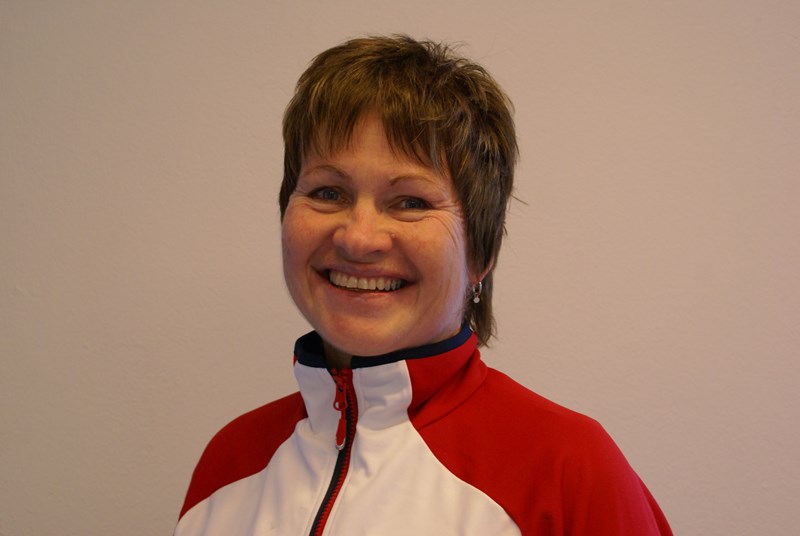Information about a piece of news titled Hilde Fredriksen is defending her thesis on the 16th. of April 2021
Hilde Fredriksen is defending her thesis on the 16th. of April 2021
Intoduction
Hilde Fredriksen is defending her thesis "Prevention of shoulder injuries in handball. The challenge of implementation of preventive measures" on April 16th.

Disputas
- Date: Friday 16th of April
- Place: Bacause of Covid-19, the events will streamed.
- Time - Trial lecture: 10.15 am - "Is the future PROMISing? Pasientrapporterte utfallsmål ved muskelskjelett-tilstander – potensiale og begrensninger". Click here for streaming of the trial lecture at NIH´s Youtube channel.
- Time - Thesis Defence: 12.00 pm - "Prevention of shoulder injuries in handball. The challenge of implementation of preventive measures". Click here for streaming of the trial lecture at NIH´s Youtube channel.
Committee
- Committee chair: Tron Krosshaug, Prof. Oslo Sports Trauma Research Center, Norwegian School of Sports Sciences
- 1. Opponent: Martin Hägglund, PT, PhD, Prof. Linköping University
- 2. Opponent: Kirsten Lundgreen, MD, PhD. Lovisenberg Hospital
Handball players are at high risk of shoulder injuries with frequent recurrences and exacerbations. Although a newly developed shoulder injury prevention program reduced the risk of shoulder problems in handball, the adherence to the program is low because players deem it too time-consuming and have little motivation to participate. Therefore, efforts to reduce the program length is needed.
Since a previous injury is the strongest predictor of a new injury, efforts are needed to recognise a new injury as early as possible (secondary prevention) and ensure proper rehabilitation and return-to-play decisions (tertiary prevention). The Kerlan-Jobe Orthopaedic Clinic Shoulder and Elbow (KJOC) questionnaire is a valuable tool to monitor the status and health of an overhead athlete’s shoulder though it is not available in the Norwegian language.
Methods
This dissertation is based on three separate research projects. In the first project, we translated and culturally adapted the KJOC questionnaire to Norwegian and evaluated the measurement properties of the questionnaire (Paper I). In the second project, we conducted a randomized controlled study to assess the effect of the Oslo Sports Trauma Research Center (OSTRC) shoulder injury prevention program on shoulder external rotation (ER) strength and internal rotation (IR) range of motion (ROM) (Paper II). Both ER and IR ROM are considered to represent key risk factors for shoulder injury among adolescent players. In the third project, through a Delphi consensus study, we developed a short shoulder ER strength program to which handball players would likely adhere (Paper III). The effectiveness of this program was thereafter assessed in adolescent handball players through an 8-week randomized controlled study (Paper IV).
Main Results
The Norwegian version of the KJOC questionnaire was found to be a reliable (ICC = 0.967, SEM = 3.05), valid and internally consistent questionnaire (Cronbach's α = 0.952) for Norwegian overhead athletes (Paper I). The OSTRC prevention program for shoulder injuries in handball affected neither shoulder ER strength (estimated group difference 0.06N/kg, 95% CI -0.04 to 0.17) nor IR ROM in a cohort of young handball players (Paper II). In Paper III, we reached a consensus for both efficacy and adherence in two exercises: ER in 90° abduction in a bent-over squat position and ER in 90° abduction combined with horizontal abduction and trunk rotation in a push-up position. Finally, the short ER strength program had no effect (estimated group difference 0.06N/kg, 95% CI -0.01 to 0.14) on ER strength in adolescent handball players (Paper IV).
Conclusion
The OSTRC shoulder injury prevention program did not affect shoulder ER strength or IR ROM. Therefore, the preventive effects of the program must have been due to other factors or the interaction of risk factors. In addition, the short shoulder ER strength program did not increase shoulder ER strength in adolescent handball players. A higher dosage might thus be needed for strength improvement in already strong players.
Our results suggest that the Norwegian version of the KJOC questionnaire is a reliable and valid tool for evaluating shoulder and elbow-related problems in Norwegian overhead athletes
Supervisors
-
Grethe Myklebust, PT, PhD, Prof, Senter for Idrettsskadeforskning, Norges Idrettshøgskole
-
Ann Cools, PT, PhD, Prof. Department of rehabilitation sciences and physiotherapy, Ghent University
The thesis is based on the following articles:
I. Fredriksen H, Myklebust G. Norwegian translation, cross-cultural adaptation and validation of the Kerlan-Jobe Orthopaedic Clinic shoulder and elbow questionnaire. BMJ Open Sport Exerc Med. 2019; 5(1):e000611. https://doi.org/10.1136/bmjsem-2019-000611
II. Fredriksen H, Cools A, Bahr R, Myklebust G. Does an effective shoulder injury prevention program affect risk factors in handball? A randomized controlled study. Scand J Med Sci Sports. 2020. https://doi.org/10.1111/sms.13674
III. Fredriksen, H., Cools, A. & Myklebust, G. (2020). Development of a short and effective shoulder external rotation strength program in handball: A delphi study. Physical Therapy in Sport 44, 92-98. doi:10.1016/j.ptsp.2020.05.005
IV. Fredriksen, H., Cools, A. & Myklebust, G. No added benefit of 8-weeks of shoulder external rotation strength training for youth handball players over usual handball training alone: a randomized controlled trial. Accepted for publication in the Journal of Orthopaedic & Sports Physical Therapy. Reproduced with permission. Copyright ©Journal of Orthopaedic & Sports Physical Therapy®, Inc.
Read more about Hilde and her projects here.

